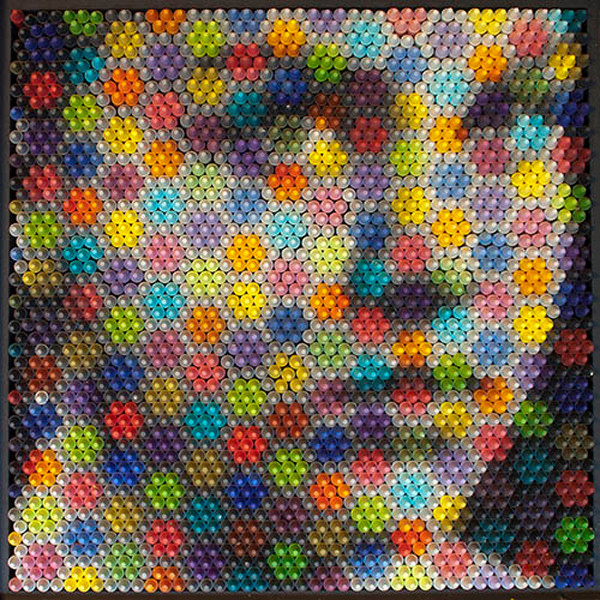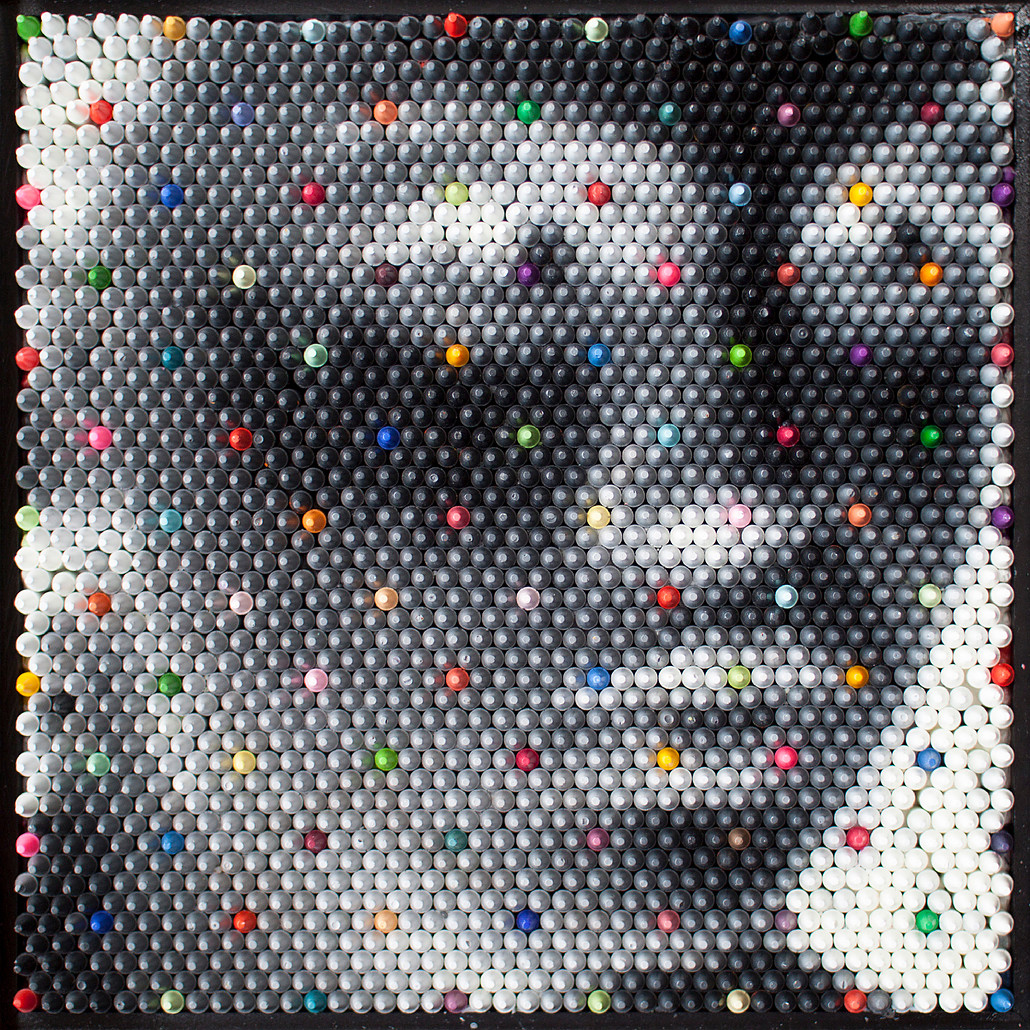Look closely. This artist's homemade crayons reveal a bigger picture
GRANVILLE, Ohio — When you first see Christian Faur's pixelated paintings, you may not recognize what you're staring at: stacks of thousands of homemade crayons. The Ohio artist has made 79 paintings to date in his "Melodie" series, using a process that he's described as "ridiculously labor extensive." He plans to continue his run of crayon paintings until he reaches No. 100. The last painting will become a gift for his daughter, he said.
Faur, whose work explores the intersection of technology and art, is also Denison University's director of collaborative technologies for fine arts.
"I'm working with students to use data and data analysis as a medium to create works of art," he said.
During a conversation with the PBS NewsHour, he said he actually hopes for failure as an artist, "because through failure and continuously trying to get your idea out, you learn a lot. And so, every work that I do, I feel in a lot of ways, it allows me to scaffold to the next idea."
Faur talked with the NewsHour about what prompted him to explore crayons as a medium, the value of modifying his materials and why he can't choose a favorite color.
What made you want to use crayons for these paintings instead of a different medium?
I started working as an oil painter for a long time, and then I switched over to encaustic, which is a wax-based medium instead of an oil-based medium. And I really loved the surface. I loved everything about encaustic, with the exception that it was really difficult to do photorealistic work. So I tried to come up with a way of going back to the idea of photorealism, while still keeping within that medium.

And I came up with an idea one Christmas when I was assembling this handmade box of crayons that I had made for my daughter. I made the box, not the crayons, but I thought the wax from these crayons — those tips — would make the perfect vehicle to convey this idea of creating these photo mosaics and, in essence, using encaustic wax.
Who tend to be your subjects?
The subjects differ. The "Melodie" series is a photo of my daughter I took several years ago, almost four or five years ago now. I had made an initial one and the gallery sold it, and I always felt a little bit sad that it had sold because it was such a beautiful piece.


So, I decided I would try making several more [paintings], using different colors and different techniques. And that kind of evolved into a very a pop-art-oriented series that allowed me to not only recreate the same image over and over again, but play with the idea of patterns. Then whatever I have the finished result, it's always a "Melodie" piece, but each one is completely different.

How do you apply mathematics to your body of work?
Crayons is just one of the many mediums I work in. And so, a lot of my processes are based on taking material and modifying it — versus a process or a set of systems or rules — in order to reassemble it or recreate it and have the materials themselves become part of the meaning for the work.
What's a favorite color you hand cast yourself?
[Laughs] I love all colors equally.
This is the cool part: I can cast up to a million different colors. I mean, because I cast all the crayons by hand, every piece has a different body of crayons. It's like a painter; I use my rice cookers and mix the colors like a painter mixes paints, until they get the right flavor of color. This last decade, I've made several hundred thousand different colors, which I always keep in a bag of prepared crayons downstairs. Yeah, to choose a color, it would be it would be hard for me.
The video report originally appeared on WOSU's "Broad and High."
Support Canvas
Sustain our coverage of culture, arts and literature.



















